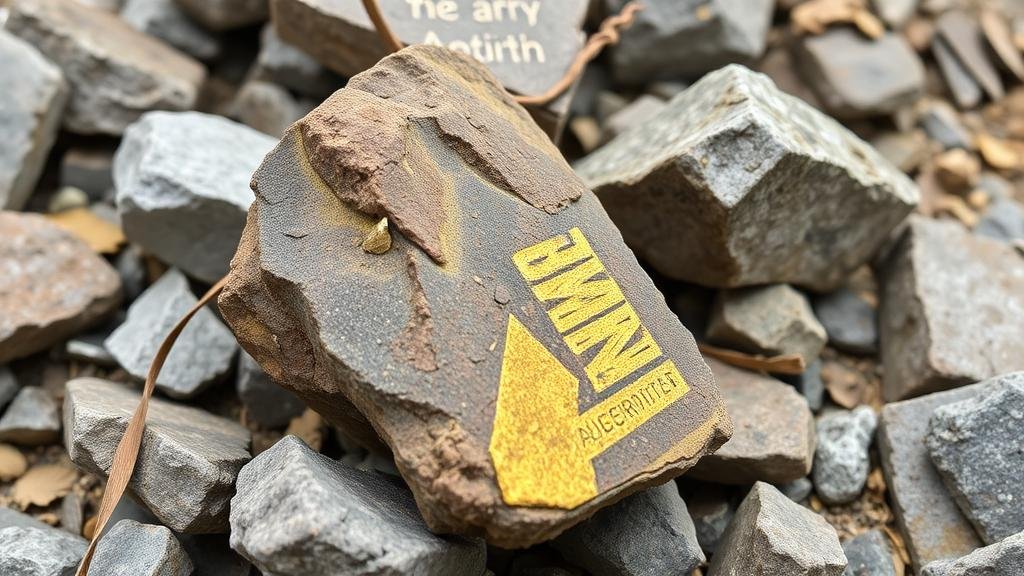How to Spot Angular Rocks That Indicate Gold Proximity
How to Spot Angular Rocks That Indicate Gold Proximity
Finding gold can often seem like searching for a needle in a haystack. But, understanding the geological indicators associated with gold deposits can significantly enhance your chances of success. One such indicator is the presence of angular rocks, which often point to the proximity of gold. This article will delve into how to identify these rocks and their significance in gold prospecting.
The Significance of Angular Rocks
Angular rocks, characterized by their sharp edges and irregular shapes, stand in contrast to rounded stones shaped by years of erosion. The angularity of rocks suggests that they have not been transported far from their source, indicating that they may be located near mineral-rich areas, including gold deposits.
Geological Context
To understand why angular rocks can signal the presence of gold, it is essential to consider the geological processes that create these formations. Gold is typically found in quartz veins, which form through the crystallization of molten rock or hydrothermal fluids. When these veins erode, they can produce angular fragments of quartz and other minerals.
- Angular rocks often indicate that the material has been recently weathered from a nearby source.
- The proximity to gold lodes means that angular rocks can be key indicators in areas where gold mining previously occurred.
Identifying Angular Rocks
Detecting angular rocks involves both visual inspection and geologic knowledge. When prospecting, look for the following characteristics:
- Sharp Edges: Angular rocks will have clear, pointed features rather than the smooth contours of eroded stones.
- Irregular Shapes: Unlike rounded river stones, angular rocks will exhibit a variety of shapes and sizes.
- Associated Minerals: Many times, angular rocks will be found in conjunction with quartz or sulfide minerals, which can support the presence of gold.
Field Exploration Techniques
When conducting field exploration for angular rocks that may indicate nearby gold, consider employing the following techniques:
- Visual Scanning: Spend time scanning the terrain for rock formations that stand out due to their angular features.
- Sampling: Collect rock samples from potential locations, especially those displaying angularity, and analyze them for gold content using a portable assay kit.
- Use of GPS: Mark locations where angular rocks are found, which can help in mapping areas of interest for further investigation.
Case Studies and Real-World Applications
Several mining operations have leveraged the knowledge of angular rock formations to successfully locate gold deposits. For example, the Carlin Trend in Nevada, one of the most prolific gold mining areas in the world, features numerous angular rock formations that have historically been associated with significant gold finds. By targeting these geological indicators, miners have been able to uncover multi-million-ounce deposits.
Another illustrative case is the Klondike Gold Rush, where prospectors learned to identify the angular fragmentary quartz in the region, leading them to rich placer deposits in streams and riverbeds. This hands-on knowledge of geological signs proved crucial in the settlement and exploitation of the area.
Conclusion and Actionable Takeaways
In summary, spotting angular rocks can be an invaluable skill for gold prospectors. By recognizing the significance of these geological indicators, employing effective exploration techniques, and learning from historical case studies, you can enhance your chances of finding gold. As you venture into the field, remember to:
- Familiarize yourself with the characteristics of angular rocks.
- Use appropriate geological tools to analyze and sample rocks.
- Map potential gold-rich areas based on your findings for future exploration.
Armed with this knowledge and a keen eye for angular rocks, you are better positioned to embark on your gold prospecting journey.



